Lights Out


Trash Talk

(The hemline index. I am suspicious, since Schick Quattro Razors have a vested interest in more skin. Image courtesy Schick Corporation.)
I know it is stupid to waste any time at all about the train-wreck that is coming in January. I mean, if no one else in town is taking the double-whammy of tax increases and sequestration of the Defense and Entitlement budgets seriously, why should we?
The fact that, should we be allowed to drift into the economic whirlpool, my industry, and by extension, me, will get whacked has an air of unreality. I imagine whoever wins the Olympian contest in November will do something about it. I certainly hope so.
But that brings the economy and its current ambivalence front and center into a discussion that one side would like to avoid, and the other wants to have front and center.
What is a citizen to do? Diving the entrails of a sacrificial animal is so fifteen hundred years ago. Isn’t there a better way to see the way ahead?
There are a host of indicators that are purported to tell the real tale of the consumer’s state of mind and mood, completely independent of the Bureau of Labor Statistics. You have heard about all of them. There was a time when I calculated daily incomes in the third world against the Big Mac standard, which is to say, the local currency converted into the number of two-all-beef-patties with special sauce on a sesame seed bun that a day’s labor was worth.
“Constant Burgernomics” I called it.
The comparative rate of burger prices were not particularly good for identifying domestic macroeconomics though. There is of course the correlation between the length of women’s skirts and macroeconomic activity. There is also the “lipstick index,” the “manicure index” and the “heel height index.”
The conventional wisdom is that women, who determine most major economic purchases, wear longer skirts, purchase lipstick, do their own nails and elevate their heels because of how they feel about the economy.
One argument about the success of the Indian economy during the period of the melt-down of the West (2008 and forward) is that Indian women do not wear skirts, but rather the unchanging ankle-length sari.
I naturally am incensed at the criteria. All these alleged indicators are not only sexist and demeaning, but also, to one degree or another, patently false.
Bogus as they might be, they are all based on the premise- accurate, I think- that no one has a clue as to what is going on, and it is easier to attribute our future to something irrelevant but familiar. No one has cared much about what any fashion-week designer put on the runway since Mary Quant sent the hems to the roof in the 1960s.
I did see one of those charts that does explain things in a non-traditional but arresting manner. It is the garbage index. It is pretty straightforward: the amount of trash we generate is a direct reflection of economic activity.
In this chart, the people at Business Insider lay out the amount of trash that is shipped by carload across the last decade. You can see what happened in 2008, when a world ended, though we did not know it at the time. You can see the correlation between carloads of waste and the GDP. So far, there is not a direct correlation between the GDP and amount of trash for the third quarter.
On the other hand, Trash data, being a private business, normally is available as much as six weeks ahead of unemployment data or tax receipts.
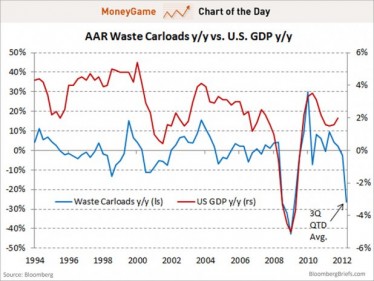
(The Trash Chart of the Day. Courtesy Business Insider).
Knowledgeable trash insiders say that as much as 30% of trash is composed of packaging, and a decline in the amount of finished good purchased could explain the decline. There are other factors, of course. Business and restaurant refuse could decline, based on fewer people shopping or dining out.
But it could also mean that a sudden and universal commitment to recycling has broken out. Considering the state of discourse on the political trail, I really am a bit surprised the trash man is not shipping a lot more.
I don’t know. It is certainly more fun looking at hemlines than trash, and it is entirely possible that nothing actually means anything. It could just be the usual trash-talk.
Copyright 2012 Vic Socotra
www.vicsocotra.com
Big Jim

(Admiral James D. Watkins as Chief of Naval Operations. Photo USN.)
My pal Joe shipped a note to me this morning, which he does regularly about issues in the Community, either government or contractor. This was different. It was an obit, and it was one of a famous guy. I looked at it with curiosity. I had two personal interactions with the Admiral in my life, though he had an impact that was much more profound than a couple drive-by encounters.
I was going to re-package the formal obit for the magazine I edit, since Big Jim Watkins had an impact on our little Spook community, but the impact of his forthright approach to issues military and civilian was amazing. Here is the way my version of the formal thing starts:
“26 July 2012. ADM James D. Watkins, USN-Ret., 85, Alexandria, of congestive heart failure. In addition to a distinguished Navy career that included service as the 22nd Chief of Naval Operations, Jim Watkins later served as Secretary of Energy. He was CINCPACFLT for a cadre of notable 1630 officers, including Mike McConnell, Vince Fragomene, Joe Mazzafro and a host of junior FOSIC Officers who went on to careers of note in the community.”
I could tell you who the JOs were, but that would imply I was one of them and I won’t go there. It certainly was an interesting tour, and it taught me the basic methodology of the analytic trade that served me well enough down through all the years.
The first time I talked to him in person I was in ranks in the crater at Makalapa. For some reason, the Admiral decided to have a personnel inspection. All the officers on his staff were commanded to be present, whether they were on the watch-bill or not.
We were resplendent in tropical white long uniforms. I was wearing one of my best (and non-controversial) Philippine belt buckles. Honestly, I had forgotten that the non-regulation adornment was not appropriate to the inspection ritual, and Big Jim stopped to tell me that, gently, as he walked down the rows and columns. He was an imposing figure in his Navy whites, the golden dolphins glittering above his rows of ribbons. He stood 6-foot-4 and was known to his peers as “Radio-Free Watkins” for his blunt outspokenness. To us he was just The CINC.
There were no dramatic repercussions from my first encounter with him, and I appreciated the personal insight without career penalty. Our paths diverged thereafter. The Admiral had bigger fish to fry than the wide Pacific. ADM Sylvester “Sly Bob” Foley, an aviator with a roguish Airdale sense of humor, relieved him at Pearl Harbor, and by the time I arrived back in Washington, Watkins had retired.
During his time as the Service Chief from 1982 to 1986, he was considered an architect of the Reagan-era Strategic Defense Initiative, the proposed missile shield and muscular planned response to a Soviet nuclear attack. We saw that even out in Hawaii, harnessing some special materials to channel an aggressive posture against the Soviet Ballistic Missile Submarine Force that would have been unthinkable under Jimmy Carter.
Ironic, really, since Jimmy had been a nuclear submarine officer.
In 1987, President Ronald Reagan named Watkins to lead the President’s Commission on the AIDS Epidemic. Watkins was both a Catholic and Republican, both of which qualifications would seem to have made him an unlikely candidate for the job, not to mention that he openly admitted that his lack of medical experience.
In the obit, they quote his second wife Janet as saying: “He told the president, ‘I’m a sailor and a submariner, and I know nothing about medicine. Reagan apparently told him, “You’re exactly who we’re looking for.”
Those days seem so far away now. I recall reading Randy Shilts’ path-breaking non-fiction book “And the Band Played On” at the time, and feeling that the shadow of something profoundly evil was abroad in the land, and moreover that the policymakers and the activists did not have a clue on how to deal with it.
Shilts died of AIDS in 1994- just as the nation was waking up to the magnitude of the threat. Jim Watkins turned out to be the perfect guy for the job. Blunt spoken, outgoing, and able to harness superb organization skills to marshal resources against a threat as immediate as nuclear deterrence.
Naturally, his appointment to lead the commission was a lightning rod for activists, many of whom had previously been vocal in insisting that safe sexual conduct was not an essential- if not the essential- tool to stop the spread of the disease.
Big Jim’s leadership reinvigorated the panel, and the strong and forthright recommendations of the panel to address the “unfolding public-health calamity” never got the credit it deserved from the Reaganauts.
The Admiral did a lot of other stuff. His background as a nuclear submariner made him a natural as a pick for Energy Secretary in 1989, in the first Bush administration.
Oddly, I have met three of the men who presided at the James V. Forrestal Building downtown: Big Jim, Bill Richardson and Spence Abraham- and looked all over the wreckage of the Manhattan Project that still occupies the landscape and which the department oversees- but of the three Big Jim was the one who had the technical street creds to actually do the job.
He was a ’49 grad of the Naval Academy, and an early protégé of Hyman Rickover, the eminence gris of safe and reliable nuclear power. When he took over the Department, the problems were as bad as you can imagine. Rocky Flats, where they manufactured the nukes was a shambling environmental disaster. Big Jim made some significant progress in bringing order to a chaotic legacy of secrecy and neglect.
Big Jim formed an intelligence unit to collect data on foreign warhead stockpiles and established a spy-hunting office to safeguard America’s nuclear secrets. He actually brought the Department into the Intelligence Community, recognizing that even non-traditional customers required a seat at the national table.
But it was not that experience that brought us briefly together again. It was late 2002, I think. Dr. Tony Fauci of the National Institutes of Health was a frequent visitor to the Secretary’s office suite at Health and Human Services. It still boggled my mind that I had a chance to work there, and it may have been the most broadening experience in my government career. Where else could you wind up shooting the shit in the waiting room outside the Secretary’s office with the doctor responsible for all AIDS research at the National Institutes of Health?
Tony mentioned to me that Big Jim as “an early and crucial advocate for AIDS patients,” just as they said in the formal obit. I had mentioned to him that Big Jim had called me out of the blue in my little windowless office in the Public Health Emergency Preparedness division of the HHS secretariat.
“He wanted our support in an effort to support victims of the disease,” I marveled. “I told him I was one of his sailors at PacFlt, and we almost lost the reason for his calling me. He was an effective arm-twister even in retirement. He was still strongly against stigma and discrimination.”
Dr. Fauci nodded, and then we were called in to discuss SARS or monkey pox or bird flu or whatever the deadly threat de jour might have been that day.
Big Jim’s military decorations were lavish, though submarine officer sdid not flaunt the fruit salad that the aviation Navy sported after Vietnam. He wore two awards of the Defense Distinguished Service Medal; three of the Navy Distinguished Service Medal; three Legions of Merit and the Bronze Star.
They don’t have a lot of fruit salad for civilians, which I think is fine. But I think that Big Jim Watkins ought to be remembered as one of those Naval Officers who may have made a bigger contribution to his country out of uniform than he did in it.
Copyright 2012 Vic Socotra
www.vicsocotra.com
One Step at a Time

I thought the story was so cool when I saw it that I had to clip it electronically and review in detail. It was a candidate for yesterday’s story until I got off on other technologies that don’t deliver on what they promise. I suppose I should reserve judgment until the new washers and dryers are installed and hopefully operational.
The story I blew by yesterday is worth talking about today, though. Check this: an alleged senior Iranian nuclear scientist contacted some Black Hat cyber security guys to say that several computers activated themselves in the night, un-commanded, at the Natanz nuclear plant. The machines began to play the AC/DC arena rock anthem “Thunderstruck.”
You can imagine what the Iranian IT security folks thought about that, particularly after the STUXNET virus hosed up their uranium enrichment centrifuges.
I think ‘Thunderstruck’ is a great signature song for what is happening to the Iranians, particularly in light of the fact that the affected machines were running Siemens software. It is a curious thing.
What I think is working here is the demonstration of the follow-on, or companion to STUXNET, the “Flame” program. Flame was something special. It was a remote monitoring capability that could turn on microphones and cameras on target computers, log keystrokes, literally make the target computer a reporting sensor for a remote user.
If this Thunder program has been introduced with AC/DC tunes playing unbidden in the fastness of the Iranian nuclear program’s virtual privacy network, it indicates that someone now knows their fire-walled system as well as the owners do.
I would have little confidence that their IT will work the way it is intended to work when it counts- and perhaps that is the point of this (apparent) innocuous manifestation of continued infection. A sort of “Hi! Still here!” greeting to the scientific vanguard of the Shia Bomb.
Just a thought.
It is nice to get my eyes up off my little personal problems and look at things further away than where my cane is going. It was a scorcher of a day, but nice. I swam twice, and being concerned with the impending upgrade of the laundry rooms, I hobbled down the hall with my dirty clothes. I have tokens to burn, after all, and this marked another significant milestone.
In the earlier days of my incapacity as they served they purpose, and then nudging the full hamper atop my old-lady cart down the hall, poking with the crutches, or dragging the hamper behind me on one occasion with the crook of my cane.
That is an indication of how far this strange and private journey has gone. When the workday was done- I thought- I drove over to the Fort and hit the Commissary. It was a hundred degrees almost, and steamy. I put the groceries away before anything cooked by itself and encased a beef brisket in foil to slow cook overnight. Then I mixed a vodka tonic and sat down to make a last swipe through the office e-mail and close out the day.
I frowned. There was a tasker from some distant colleagues (different business group) to support a proposal they are doing, and they were wrapped pretty tight. I sighed and began to compile lists and write boilerplate language to support their efforts.
Anyway, the delay postponed my arrival at the pool until after eight. I swam with Jiggs, for a half hour and then returned to the unit semi-refreshed and aching. I ate the leftovers I had put in the skillet- out of the skillet- and realized if I tried to watch something on the television I would simply fall asleep there. I went back to the bedroom and took off the leg brace and got under the throw-blankets I have been using rather than the eiderdown in deference to the heat and humidity of the DC summer.
The phone rang, of course, and it was not the Blackberry next to me on the bed but the regular cell, which is the number on my business card. It was out by the computer in the living room. Crap.
I swung my naked legs out of the bed, glanced at the brace where it leaned against the tall white credenza, and shook my head. I rose, steadied myself and walked to the kitchen to get the phone. Then I walked back to bed and called back the people working on the proposal deep into the evening.
As I punched the buttons to dial back the last number, I realized I had walked upright and unaided for the first time since the accident in March. “Far out,” I thought, thunderstruck.
Walking is good. Maybe I will be able to walk to work this fall. I sure hope so. Where did the summer go? I picked up the iPad from where I had tossed it on the blanket. I clicked on the iTunes logo, and went to the music store.
For some reason, I thought I ought to have AC/DC on my playlist.
Copyright 2012 Vic Socotra
www.vicscotra.com
Coming Clean
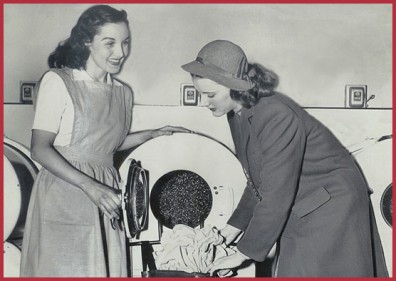
(The Coinmach empire began with a single row of front-lading machines in Long Island in 1947. Now it is coming after me. Photo Coinmach.)
I am starting to panic. The issues cascading over us- the nonsensical tax bills wending their ways to nowhere in the Senate and House, the controversy over whether there is an Anglo-American traditional link between the late Colonists and the Mother Country, the tortured nuances between the candidates, discussions of firearms control, Russians with nuclear weapons going back on patrol….I sense a common thread in all this.
We are committed- passionately committed- to things that won’t work.
You don’t have to stay with me. That really is enough of an observation to get going this morning, going with the flow.
In fact, it was basically ‘the flow’ that got my agitation cycle going. I was going through yesterday’s mail at the breakfast table when I discovered the most recent emerging threat to my tiny portion of Western Civilization. The threat is being delivered not by Mr. Putin’s submarine missile force, but by the Big Pink Condo Board. There have been flyers in the elevators for several weeks, announcing that the washers and dryers in the common laundry rooms are being replaced.
The ones we have now are standard vanilla Speed Queens, with slots for tokens available for purchase from Rhonda at the concierge desk in the lobby. The tokens come in little manila enveloped, $30 apiece. I normally get two, since it is a pain to have to start a load, run short of a token and have to take a trip with a check to see Rhonda, not that it isn’t fun to go down and flirt a little.
Of late, that has been most of my human contact. With the looming replacement of the laundry equipment comes real change, and it is change I am not sure I can believe in.
The mail brought matters to a head. A crisp white envelope held several brochures outlining the superior technology that is going to make our lives better.
As an aside, if you have a single family home, or a condo constructed after the Age of Flying Lizards, you are probably are responsible for your own laundry infrastructure. I remember the days when I could walk through the mud-room, throw some soiled clothes in my washer, and walk away. There was never a queue to join, or a trip down the hall to see if the machines are in use. Some of my neighbors apparently have laundry as a hobby, and the only way to beat them to it is start the search right at the instant the Condo Board says we can run the machines, 0700-2200.
That is not going to change. But everything else is. The building has a total of sixteen laundry rooms, each one with two washers and dryers. The evolution of American life is contained in our little snap-shot. Frances Freer, the visionary lady who built the Buckingham Garden Apartments, started with the original concept of clean clothes. In Buckingham, the washing machines were in the basement of the low two-story brick buildings. They were dark, and hard to keep clean and the women hated them.
When Frances got around to erecting Big Pink as an apartment building in the early 1960s, the concept of shared laundry facilities was still the conventional wisdom. Big Pink’s approach was evolutionary: the laundry rooms would be small, and one each would be located on the east and west wings of each floor.
The women still hated it, since once the door closed behind them they were alone in the little rooms, claustrophobic and unable to see who might be outside. As the concept of “women’s work” slid into irrelevance, the next building Frances constructed (The Hyde Park, the other tower that frames the old Buckingham empire) featured a place for washers and dryers in the units themselves.
Just as things were meant to be in an expanding and more permissive America.
Anyway, it is too hard to retrofit our building to another social scheme, and at least our machines are not in some remote basement location where you cannot, a priori, determine if everyone else has the same virtuous idea simultaneously.
Fine. But I have to say that the minor irritation of the tokens and scheduling around my neighbors did not blip my list of problems. Now it does. The literature that came with the “smart card” that runs the new machines was downright alarming. We are joining 80,000 other happy Coinmach consumers.
Coinmach is an acknowledged leader in the common area laundry industry, a feature of the economy of which I had been blissfully unaware until this morning. “Coinmach delivers industry-leading laundry solutions to multifamily owners, managers and residents nationwide,” said the brochure.
And they are going to deliver a couple other things. The new machines will be front-end loaders, and they will use dramatically less water. That is a good thing, right? I support smart and efficient use of water, though since none of our individual units is specifically metered, there is no particular direct incentive to moderate our showering or dishwashing habits.
We are going to get a Coinmach custom solution to our laundry needs. The more I read about the new machines, the more alarmed I got. This is serious high-tech stuff. Energy Star, of course. But front loading machines? I don’t trust them. “Do not slam the doors,” read the literature ominously. Do not use your regular detergent, since the lower water requirement means that over-suds situations could overwhelm the machine, then the room, and ultimately spread like The Blob down the corridors and surge in bubbly white fury into the units, and flow ultimately down into the units below and overwhelm the cars in the parking lot.
The brochure admonished me to replace my Tide with a cleaning liquid certified “H-E,” whatever that might mean. I my world that has always meant “high explosives,” which caused a more than a bit of unease.
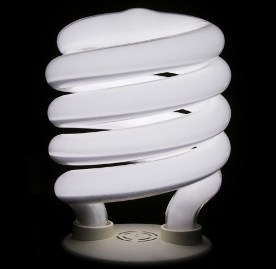
I put down the brochure. Is this like the miracle light bulb that lasts five times longer than the old incandescent? The ones that we fond out later contains a significant enough level of mercury to make the breaking of one a toxic HAZMAT event in the comfort and safety of your own home?

Is it like the low-flow toilets that have to be flushed at least twice, and which has spawned a black market in illegal Canadian commodes, smuggled in like boot-leg liquor from our neighbor to the North? The dishwashers that no longer clean the dishes, since the more environmentally friendly detergent they require does actually clean the dishes?

(It is actually 44 miles. Oh well.)
Could it be like the Chevy Volt or the Nissan Leaf automobiles that boasted cruising ranges “up to a hundred miles” on the battery, but which in practice are averaging 44 miles? The best the battery cars can do is give me the same range fully charged as when the Bluesmobile flashes the ‘low fuel panic’ light. It is technology that simply doesn’t work.
I love technology, but am skeptical about this one, based on the miracle We have a lot of older people in the building, and increasingly, I find myself one of them. The technical innovations- the new detergent, the smart cards, the ability of the machines to communicate with a central processing facility.
“Laundry facilities should be dependable profit centers designed to satisfy the needs of your residents,” says Coinmach. No tokens, smart cards. Rhonda is taken out of the equation completely, but the cards cannot be replenished by check, and you cannot flirt with them. Cash only, to be fed into those slots that never quite seem to work on a well-handled and dog-eared five-spot.
Apparently the Condo Board bought the argument from the slick salesman who appeared at the meeting: “Only Coinmach can offer the solution to meet your communal laundry needs. Very simply, Coinmach creates more revenue and greater resident satisfaction through exceptional service, leading edge technology and technologically advanced equipment and communications tools, delivering the ultimate convenience.”
The ultimate convenience, I suspect, would be a washing machine that gets clothes clean the first time. Just like the ones we have now.
I will have to rely on the Board’s judgment, since we were not asked to vote. It is Change we are going to have to believe in.
I hope I can return the $30 envelope in tokens to Rhonda. Then I will address the matter of whether I believe in Coinmach. This getting old crap is not for sissies, is it?
Copyright 2012 Vic Socotra
www.vicsocotra.com
Déjà vu All Over Again
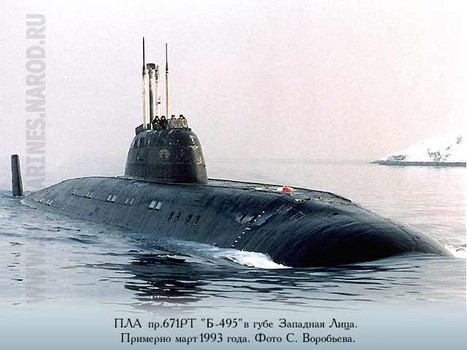
(Russian fast attack submarine in the Barents Sea. Photo Provda online.)
I know I have at least two people that read this drivel, since they wrote to ask whether I had got tired of assaulting the sensitivities of my friends and fellow travelers.
In my defense, yesterday was the day from hell. I had to be at the bank before eight to get a fat check to re-finance the farm, then the maids showed up early and I had to find a place to go offload the morning coffee, then I had to go and get beat to crap by Christina-the-Dominatrix and Torturer at Physical Therapy, then back to do office stuff and then close on the re-financing. In the midst of all that, I saw something that made me sit right up.
I have told you that I missed the old Soviet Threat. It was a reliable and comfortable old shambling bear, and the rules, learned by hard experience over decades, made things fairly comfortable.
Oh, that is not to say that we didn’t almost cross the line to mass annihilation once in a while. I can think of twice that people talk about, and another couple that happened deep under water where only a few were ever aware of some tactical events with strategic significance.

(Hero Vasili Alexandrovich Arkhipov. Photo Wikipedia)
The Cuban thing really did have potential. A Soviet naval officer named Vasili Alexandrovich Arkhipov saved the world, as we know it, one humid Caribbean day during the Missile Crisis. He was aboard the FOXTROT-class diesel submarine B-59 that was depth-charged by an aggressive task group of US Navy destroyers in an attempt to force the boat to the surface for identification.
You can understand the concern on the part of the Russians, since a depth-charge is an aggressive sort of signal, and not readily amenable to nuance. There was an argument between the three officers empowered to launch the nuclear torpedo in the lower tubes. They were authorized to fire the nuke if they agreed unanimously. Only Vasili demurred, and thus saved the world.
Another hero of World Peace is alcoholic first president of the Russian Federation, loveable Boris Yeltsin. You may (or may not) remember the day we all almost got incinerated or the launch of a Norwegian weather rocket.
That may not qualify specifically as a Cold War thing, but so are some other unsettling things going on.
Gone but not forgotten, you might say. Back in 1995, a team of US and Norwegian scientists were launching a Black Brant XII sounding rocket our of the Andoya Rocket Range on the northwest coast of string-bean shaped nation. They intended to study the phenomenon of the Northern Lights, and the best profile to do that was a lofted trajectory to the north.
Oops. The team published a NOTAM- notice to Airmen and Mariners- and the Russians received it, but did not pass it down to their ballistic missile crews. When the launch happened, the trajectory traveled through an air corridor that includes the Minuteman-III sites in North Dakota. The weather rocket was headed toward apogee at 900 miles above the earth as the Russian detection system flashed a warning that did not include the ambiguity of which direction the rocket was headed. Russian Strategic Rocket Forces went to full alert- and remember, time of-flight for a Trident Missile sub-launched missile or a Minuteman is about ten minutes to Russian soil.
By the time the armed nuclear-command-and-control football got to President Yeltsin- first time that happened in either Super Power, there were only about two minutes left to decide whether to pour a stiff vodka or end civilization, or both.

(Black Brant II rocket. Photo Wikipedia.)
I don’t know whether he got a drink or not, but Mr. Yeltsin’s indecision through the projected time of impact allowed us all to survive, and thus he enters into my pantheon of heroes.
All that seems a long way away, but apparently it is not as far as it seems. Submarines are strange and wondrous things. Since the height of the Cold War, the Russian sub-surface force has had its casualties. There is still some muttering about the loss of the big OSCAR-II cruise missile boat K-141 Kursk, and whether or not there were British or USN units in the Barents Sea at the time the boat was lost with all hands.
I am comfortable that the Kursk disaster was caused by a hyper-speed torpedo cooking off in a forward tube and detonating, but blaming others is a classic way to avoid responsibility for your own mistakes. Just last month a DELTA-IV ballistic missile boat caught fire in dry dock, and it took a day to extinguish. There is some uncertainty about whether or not she still had her missiles on board.
I am not bashing my former adversary here, at least not exclusively. The US Navy just announced a $400 million dollar fire on the LA-Class USS Miami was caused by a shipyard worker being treated for anxiety, and who wished to go home early.
I used to be in the submarine hunting business, looking for Soviet boats lurking below the waters of the vast Pacific Ocean. Accordingly, Robert Tilford’s recent piece in The Examiner caught my eye with some information I found quite astonishing. He outlined the news in this copyrighted story.
In more succinct terms, Russian Navy chief Vladimir Vysotsky announced that his forces would begin to patrol the world ocean again this month in response to the American threat to world peace.
It is an interesting proposition, and the number of things patently absurd in the story are legion. For example, Ballistic Missile Submarines- Boomers- operate best when they are protected by geography and waters contiguous to their bases. The missiles the carry are designed to be fired from these “strategic bastions” with the boats immune from prosecution. It makes little sense to place them off the coasts of the United States, closer to the attack submarines of the adversary.
I will likewise be interested to see if there is a spike in tattle-tale operations by Russian fast-attack boats. That would be an interesting development.
I do vividly recall the deliberate decision by the Soviet leadership to burn up the reactor cores of the Soviet YANKEE and DELTA force in the days of “analogous response” to the Reagan-era decision to place medium-range missiles in Europe. It drove the Soviets nuts, since it so radically reduced warning times of an attack that the very doctrine of deterrence was in jeopardy, which would, in the theory of the time, be destabilizing.
I don’t know about that, but it certainly was scary.
One of those adrenaline-charged days in the early 1980s, we were looking at some information that possibly indicated a Soviet Boomer was operating south of Baja California, an area never patrolled before.
We used the term “unprecedented” which nearly always was wrong, but quite true in this instance. There were skeptics aplenty, until one of the really smart guys sniffed and said “we will never see it coming. One boat could take out the whole West Coast, launching to the north.”
The room got real quiet. Then we got serious about seeing if we could find the boat in the warm and tranquil Mexican waters.
So, seeing this commentary about the American threat and the Russian response got my blood going. Mr. Putin’s people say that the US is guilty of serious war crimes, including “crimes against humanity, wars of aggressions, violations of international laws, genocide, terrorism, (and) financing terrorism.”
I suppose that is one interpretation, though I am left with the inescapable conclusion that Mr. Putin is trying desperately to prop up his last client in the Middle East, Syria, and is afraid he might be stopped in trying to supply more weapons to the Assad Government to slaughter his own people.
It certainly got my attention. Submarines are like underwater mines: all one has to do is announce that they are there, and leave your adversary to prove that they are not.
Still, I wonder how high the price of oil has to stay to enable this new Russian high seas, high stakes adventure? One pal in the business says the price of mischief is any world oil price higher than $77 dollars a barrel.
So, ready for a new ride on an old pony? I said I missed the Russians, and must have forgotten that you really do have to watch out for what you wish for.
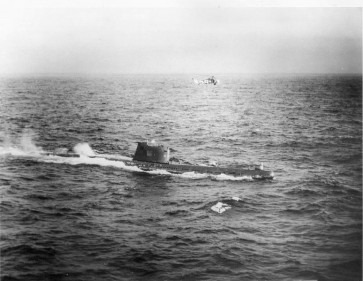
(Soviet FOXTROT SS, forced to the surface in the Cuban Missile Crisis, and which did not, by 1-2 vote, start the end of the world. Photo USN.)
Copyright 2012 Vic Socotra
www.vicsocotra.com
Water, Water

It was a gray steel-wool colored weekend. Saturday was surreal. Not because of the weather, since the persistent drizzle was a bit of a novelty. We have been sharing a touch of the drought that has ravaged this year’s crops in the Midwest. Up in Michigan, the early Spring killed off the cherry crop. Bad season, one of the worst since the Dust Bowl of the 1930s.
The water coming from the sky did sap my will to get out. I had thought there was something I needed to do on the office system, and a friend who is ailing on whom I thought I might pay a call.
I showered and got cleaned up to go out, but further research indicated the former task was not necessary, and as for the latter, my pal wasn’t prepared to sit up and entertain visitors. So I sat down and did something completely unusual.
I did nothing.
For one shining moment, there is nothing hanging over my head or lurking over my shoulder. Business is going to accelerate, but not until mid August. The Estate paperwork is essentially done and complete. The magazine that has the misfortune to have me as the editor is at the printer; the book I was editing for some friends has also gone to the people who do the lay-out work.
It was awesome. Inactivity without guilt. What a concept! I opened up the brace and inspected the incision. It appeared healthy. My eyes widened. The pool is down there, and I have been stuck in the apartment for so long- except for brief and slightly scary forays to the office and Willow- that I am out of the habit of hanging out down by the water.
I looked down, and Conrad-the-Polish Lifeguard had padlocked the gate in the drizzle and gone somewhere else. The rain could not continue forever, though, so I found the iPod and put it on the charger, and the water-proof case and the other support equipment to make pool life sustainable.
Sunday was gray but the water was confined to the pool. Conrad opened up and I resolved to do something about it. The gate was open when I arrived, though he was not.
I put my crap on the table with the umbrella I normally use near the ladder to the deep end. I sat down in one of the deck chairs and took off the brace, speed buckle by buckle until the clamshell dropped off and the atrophied muscles of the leg were exposed. I kicked of my flip flops, thinking I might just plunge in. Poised there, tottering with the uncertainly of the resilience of the leg, I got a minor anxiety attack.
Impact with the water could wind up in some position that would be either painful or cause a set back. This was too far, too fast. Too crazy. Then I thought how lame that thought was. Pathetic. I edged over to the ladder and grasped the handrails, looking down. I could see that the rungs were further apart than I was comfortable dealing with. How did something so easy get so complex? Crap.
I hobbled back over to the table, sat down and put the brace back on and then grabbed my towel and limped over to the stairs at the shallow end. I dragged a chair over so it was close, and decided this was manageable.
Left foot first, I peg-legged down into the water, a death grip on the hand-rail. I could feel the astonishing difference in buoyancy the deeper I got, and eventually stood normally, wet to my waist.
This is an experiment, I reminded myself. I thought maybe walking around the shallow end might do it, and edging down the edge of the pool I swiftly became bored. I tried a tentative stroke.
It felt great, and no twinge from the bad leg as I added a gentle kick. Hmmm, I thought, and swam slowly down to the deep end and assumed the upright position to tread water. Muscle memory took over from there- I honestly could not have described to you how my legs work when I tread, and was surprised that it turns out to be a cyclical motion almost identical to that of peddling the exercise bike.
No pain, just gentle pressure on the re-built tendons as my knee came up toward the surface.
I glanced at the clock to check the time, and started to explore how much gentle stretching motion the joint could handle. “Twenty minutes,” I vowed, and it was a magnificent feeling when it was done.
My goal is two swim-sessions a day, increasing each one by five or ten minutes. That should have me back up to an hour in a week or so, and it is exercise I like and enables me to listen to audiobooks or the radio with the all-weather ear buds.
Things are definitely looking up. Slept without the brace, too, and I have to say that today, despite the backdrop of deranged homicidal gunmen, Spain’s tanking economy, the Syrian weapons of mass destruction potentially going AWOL, and the collapse of the American economy, life is pretty damn good.
Copyright 2012 Vic Socotra
www.vicsocotra.com
Smart Growth and Civic Virtue

(Arlington’s vibrant Wilson Boulevard Corridor, looking east to Rosslyn and The Disctict.)
I live in a Blue County and drive a Blue car. That is as political as I am going to go this morning.
The issue of civic virtue has been percolating in the back of my brain for a long time, rising each time I tried to cross Fairfax Drive to get from the office to Willow in the evening, and back again. I considered the manifold civics aspect one time when a jerk in a white BMW advanced his vehicle a few feet into the crosswalk and flipped me off as I tried to navigate the gridlocked cars.
I was completely able to walk at the time, and filled with civic virtue. I offered the driver an invitation to do something anatomically impossible to himself, to which he responded by lowering his window. I am not kidding you: he asked me “Don’t you know who I am?”
Too easy. “You could be Mother Theresa, dirtbag, and you can still go screw yourself.”
I am on both sides of the issue, as a pedestrian and as a motorist. Something is going on. I went to Willow a week or two ago just to get out of the house and banish the cabin fever.
I was still on the crutches then, and the simple act of getting in and out of the Bluesmobile was a full-on production number. Door open. Crutches out, leaning them against the frame, hoping they would not slide onto the ground. Sprawl right on the big bench seat to leverage the stiff brace-encased leg out of the driver’s side and onto the pavement. Squirm upright and use the doorframe to stand. Then grab the crutches and hobble down to the central parking meter to feed in the credit card for the privilege of being at the curb.
The individual meters are long gone- this is much more efficient for the County, though a bit of a challenge for the mobility impaired. It is all part of that ‘smart growth’ thing, but there is more to all that I will get to presently.
Blue Arlington is a progressive place with a history of cutting-edge ideas. It wasn’t always like that. I have written about the curious history of this truncated diamond of a County. The donated land from the Old Dominion and Maryland spanned the lethargic brown Potomac. Once, the two tracts constituted the original symmetry of the ten-mile-a-side vertically-tilted Federal District. The great river made the construct ungovernable, and the Virginia side of the District was returned to the Dominion in 1846 over simmering animosity on Congressional districts and the abolition of slavery.
To defend the capital against the Rebels, Alexandria County (later renamed Arlington to avoid confusion with the vibrant old Colonial city to the south) was crisscrossed with redoubts and trenches across the highlands. The forts remained, along with the remnants of the plantation agricultural system that faced the Potomac, the great highway to the world ocean.
The river was lined with Great Houses (only ‘great’ in comparison with the hovels of the enslaved workers) like Abingdon, the foundations of which are now nestled in Reagan National airport’s parking garage complex, or the Custis-Lee Arlington House on the bluff above what is now the sprawling cemetery. Anyway, Union Army occupied Arlington like locusts. Just up Glebe road there was an encampment of 100,000 troops that consumed all the existing structures, stripping the land bare for wood to construct lean-tos and shanties and feed the cook-fires.
All the trees were clear-cut. The redoubts sank into the soil, and the foliage came back but the scars on the land endure to this day if you know where to look.
After the war, the County was supine and depressed for decades. Former slaves established Freedman’s Villages on land vacated by the former landholders, and within the perimeters of the old Federal fortifications. Truck farms and cottages dotted the land. The proximity to FDR’s burgeoning New Deal bureaucracy is what began the great transformation of Arlington into the bedroom of the Government, the poor exiled south of Route 50 and the wealthier to the north in a stark division.
The riots that scourged the District north of the Federal enclave knocked Arlington down a peg again in the 1960s, and sparked the sprawling auto-based development in Fairfax County to the west and Prince William to the south. I was part of that: schools, and the price of homes was the driving factor, and driving is what we did on those clogged and inadequate infrastructure of roads.
The Developers attempted- largely successfully- in wiping out any sense of history. They developed a practice of getting the bulldozers in fast to ensure that anything historical was flattered before preservationists could rally their forces in opposition.
I could cite the Chantilly battlefield, where the spot where Major General Isaac Stevens and Major General Philip Kearny were shot, nestled uncomfortably in the Toys R Us parking lot, but that isn’t the point of this.
Location, location, location is what they say, and when I could, I moved in from the ‘burbs to the slightly down-at-the-heels hospitality of Big Pink. Our building predates the 1980 County Master Plan, the one that mobilized the concept of Smart and Sustainable Growth enshrining both as Civic Virtues on the path to the future. You might have it going on where you live.
It makes you feel good. Who would be in favor of Dumb Growth? You can have plenty of that in Fairfax.
The coming of the Metro System, pushing out (in those days) along Fairfax Drive to the I-66 corridor and distant Vienna, was the pivot of development. The Plan stated that high-rise construction would be permitted in clusters within a few blocks of the Metro stops.
So far, so good, and with the high-rise buildings came the young vibrant crowds that throng the eateries and bars along the Wilson Boulevard corridor. With them came the bold vibe of youth, and a commitment to a social structure that encouraged all sorts of socially virtuous behavior. Bicyclists agitated for bike lanes; dedicated bus lanes accompanied them; new emphasis on making the area pedestrian friendly caused bold white cross walks to be painted between the stoplights on the wide auto-friendly roads as the local grid feeds the snarl of traffic onto the interstate.
Which is a long way around the rosebush to get back to my crutches and leveraging myself out of the Bluesmobile. The curb parking is just inside the new bike lane. The available space is as meager as the intent is infused with the notion of the greater good.

And Lance Armstrong, of course. Focused on the complex task of getting upright, I completely missed the lightning approach of the Lance Armstrong-lookalike on the dedicated bike lane. In the process of lurching back in astonishment, I caromed into car and the crutches clattered to the pavement.
There is a difference, in my mind, between a reasonable accommodation to bicycle locomotion and high-velocity travel by commuters armored in helmets, spandex, pedals clipped to racing flats and mirrored sunglasses. I had no option in dealing with this one. I have been a biker myself, and lived in a state of constant alertment for the driver’s door that would suddenly fly open and create a steel wall across my path.
I support bike lanes, I guess, though it adds a challenge to driving, but even more to the threat to pedestrians.
I guess if we consider ourselves to be all part of one social compact, this makes sense. I am highly cautious when navigating around here, since being overtaken by a racing bicycle in the blind spot can ruin everyone’s day. I am not anti-bike, but consider, as i have, the coexistence of the high-speed racer and the ambling hand-in-hand tourist on the dedicated paths and networks of Arlington County. Way too scary.
But with a certain amount of situational awareness and compassion, I think it is possible for us all to get along here. The problem, like the high-speed bicyclers, is that some people are just passing through. District drivers are notorious for their lack of acumen, and the congenital inability to use directional signals. Fairfax residents are committed to using us as a cut-through on the way to some McMansion out in the former fields of what was, briefly, the richest county in America with ego to match.
It is the pedestrian behavior that is spawned by the well-meaning sustainable development. Of course pedestrians should have the right of way. Never mind the Metrobuses careening around corners never designed to accommodate the behemoths. Never mind the hurtling commuters.

By painting the bright white lines of the crosswalk, the attitude of the citizens on foot has become frighteningly blasé. I am part of it myself, or was, back when I would walk from the office to Willow and cross Fairfax Drive at the crosswalk across the wide expanse of pavement. Scary. Some motorists- presumably the ones who live around here- courteously come to a stop. Others, either from elsewhere or preoccupied with their smart phones and the urgent conversation they must complete, are completely oblivious.
Navigating back and forth, the conduct has become confident on the part of the pedestrians as to be reckless. A new Jimmy Johns sandwich place paradropped into a brand new multi-use development on Pershing Drive, the way I travel the three-quarter miles to the office or the credit union. One night, proceeding along Pershing at the legal limit and just after dusk, a couple, clad in black clothing marched purposefully out into the crosswalk without even looking up.
I was alert, and came safely to a stop, but my hands gripped the wheel in alarm and my heart raced.
Combine the serene self-confidence (or the demonstration of Olympian public virtue) of the walkers with the harried urgency of the commuters, flying bicycles and lurching buses, this is an interesting exercise in sustainability.
I think I liked it better when we were just supposed to be afraid of the cars. It might have been safer that way.
Sorry- I know there are more important topics on which to dwell, but when you have to move slowly and with deliberation, these things take on a certain immediacy. I am going to try to stay alert, and hope no one walks out in front on me yakking on their cellphone.
Or nail me while I am yakking on mine.
Copyright 2012 Vic Socotra
www.vicsocotra.com
Hurts So Good
21 July 2012

I do not want to talk about politics, and it seems that all there is to do is talk about politics, or the politics of tragedy, or the other way around. I am going to stay away from it.
There was a tantalizing story out of troubled Syria. I don’t know how you process news such as this. I think that when I hear “bomb” and “Middle East” I shut off my hearing. Seeing the kids at Walter Reed who have been blown up fills me with sadness and regret, and I guess tuning out the key words is a means of denial that it is all still going on.
But this was no horrific but banal attack on civilians in a market far away, or an IED strike inflicted on an Army patrol. This one was a singular bit of focused savagery, and there was nothing random about it.
At a location only ten minutes from the Presidential Palace, bombers managed to kill Syria’s Defense Minister Dawoud Rajha, Intelligence Minister Hisham Ikhtyar, Former Minister of Defense Hassan Turkmani and Deputy Defense Minister Assef Shawkat, President Assad’s brother-in-law. Interior Minister Mohammed Shaar (who commands the internal security apparatus) was badly wounded.
That is the regional equivalent of the loss of Leon Panetta, Bob Gates, Jim Clapper and Ash Carter, while wounding Janet Napolitano.
It is mind-boggling.
Russian President Putin must be taken aback, since he is backing Assad. Regional politics being what they are, naturally it is not the Rebels who are being blamed for the attack, but rather the CIA. Then there is the matter of Syrian weapons of mass destruction, and the rising concern of adjacent nations: Turkey, Jordan and Israel, all with their own calculus and calculations to make.
Crap, that is politics, and I said I was going to try to stay away from it.
There was a little discussion about it at The Amen Corner at Willow, where the discussion focused more on Tracy O’Grady’s Friday special next week, and whether we should publicize it or keep it quiet and save more for ourselves.
I took solace at Willow from the smack-down I got at the hands of my physical therapist in the morning.
I told you about Christina-the-torturer-in-chief. She is a curvy blonde woman with a curvy figure and a diabolical means of inflicting pain.
I told you about the initial visit. It was in the manner of an assessment of the post-op healing, and then about making the limb functional again. It was a watershed at the time: “Come on,” she said. “You are not fragile. Get strong.”
That was an interesting perspective. The second visit was a visit to a brand new vista. I thought we might be doing exercises, so I wore running shorts and a t-shirt. She had me remove the brace, and then commanded me to walk over and mount an exercise bike.
“Um,” I said. “I am not sure I can do that.”
Christina shrugged and handed me a cane, and pointed at the machine.
More revelations. She placed a digital timer on the handlebars and told me to start peddling. I put my feet on the pedals and tentatively pushed. The pedals rotated to a position with my left leg near the top of the circle and came to a stop against the tightness of the tendons. “Um,” I said again, lamely. “I don’t think this works.”
“Just try,” she said. “Ten minutes.” Then she bustled off to assist some other people with joint problems.
Well, suffice it to say that I eventually managed to get the knee bent far enough that I could slowly start to pedal, and then increase the rate. I was pretty aggressive, though the pain was remarkable as I got to maximum degree of flex.
What I didn’t know was how much more we were going to do after the bike. I might have paced myself better, since the accursed machine was just the first of many. Forty-five minutes later, bathed in a sheen of sweat after a thoroughly pedestrian set of exercises, Christina asked me how I felt.
I considered it for a moment. Then I said “It hurts really good.” Then I decided to walk from my car to Willow without a cane that evening and see how it was working out.
Copyright 2012 Vic Socotra
www.vicsocotra.com
Dark Night.
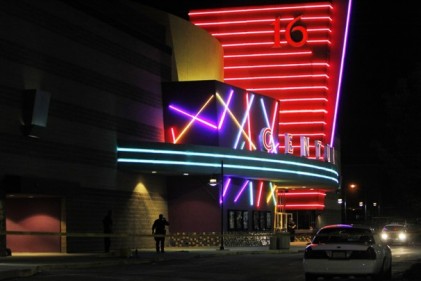
It was a dark night in Colorado. There has been another one of those periodic American events.
This one has some vaguely interesting nuances. The location was not far from Littleton, to a town in which I once lived.
It happened in Aurora, at the Century 16 multiplex theater. A “lone gunman dressed in black” entered theater nine through a side exit wearing Kevlar and a gas mask, tossed some pepper spray and began shooting up the crowd.
The people were there to see the midnight premier of a fairly-well reviewed film in the Batman franchise. It has been so hot lately that the dark of night and the air conditioned theater must have been welcome to the crowd.
Aside from those details, the story is about the same as the last horrific gun event: some deranged guy, always a guy, takes a moment to transform the lives of dozens, and end those of a dozen innocent citizens.
I don’t know what to say. Jared Lee Loughner was the last young white man who took the notion of his supposed exceptionalism to a murderous level when he attacked a pert, personable Congresswoman and her staff.
There is a depressingly long line of lone gunmen in our recent history. The horror at Columbine High School was unusual in that Eric Harris enlisted the help of his buddy Dylan Klebold to commit the despicable crime.
They just announced this new murderer’s name, James Holmes, 24, and they did take him into custody. I am betting he is going to have a lot in common with some of the other assholes we have been forced to learn about.
It was a dark night in Colorado. Hell of a summer on the Front Range. Pray for those who were wounded. Mourn for those who died.
Whiskey Tango Foxtrot.
Copyright 2012 Vic Socotra
www.vicocotra.com
